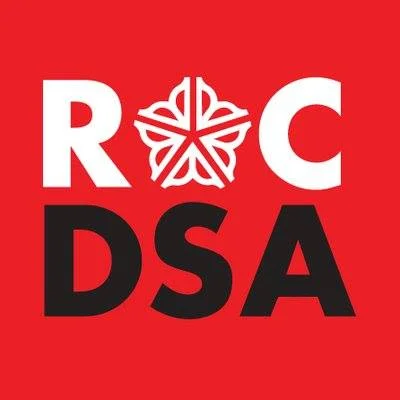
No Kings Means Accountability for All Elected Leaders
by Donald Martell
Everyone who showed up to the No Kings protests on October 18, 2025, realizes that on some level there is something very wrong with where this country is headed and how it is operating right now. But I want to emphasize that while something IS deeply wrong with this country, this cannot come as a surprise. Political, social, and economic repression have always been a part of the social fabric of this country. We are a nation founded on the removal and genocide of Native Americans, governed by laws written by men who kept slaves while hypocritically boasting the creation of a state where “All men are created equal.”
What we are seeing today—political opponents being unfairly targeted, talk of rigging the 2026 and 2028 elections, our Black and brown neighbors being snatched up off the streets by masked thugs regardless of their immigration status, and a GENOCIDE happening in Gaza—all of it is connected. That is what our “democracy” has delivered us. It’s time we all wake up and realize this country has never been a true democracy and has always been a country by the rich and for the rich. This is why I declare myself a democratic socialist. I believe in everyone having a voice and being lifted up so they can use that voice, and I believe in every single human’s right to healthcare, housing, education, food, water, and democracy both in and out of the workplace.
That is what we must stand for if we are to fight fascism effectively; because catchy signs being waved at a protest every so often will not change things. What does change things is organizing your community, your workplace, and your political party to protect yourselves from the encroachment of fascism. Acting upon principles that are rooted in the belief that every single person deserves healthcare that is free at the point of service, housing that is safe and affordable, education that is cheap and accessible, water that is clean, food that is nutritious, and a political system rooted in democracy that works for regular people like us all—not just for the ultra-wealthy capitalists who own our institutions and have been eroding them for 50 years—is the way we can oppose fascism.
We can fight fascism right now by holding our elected officials accountable at both the ballot box and in their offices. Accountability is crucial to any functioning democracy. In order to effectively fight fascism, we need to have the help of elected leaders, and if we want to talk about No Kings, let’s also talk about no vassals (feudal servants to the king): how about we get rid of the congressman who signed onto a letter thanking Trump’s ICE for all the raids they’ve been doing this year? Joe Morelle did that. How about we get rid of the congressman who voted to increase Trump’s military budget? Joe Morelle did that. How about we get rid of the congressman who voted to give billions of weapons to Israel despite it committing genocide against Palestinians? Joe Morelle did that.
As stated by one of my favorite modern political philosophers, Matt Christman: “Fascism arises from the collapse of institutional legitimacy of liberal institutions. That’s how we got fucking Trump, [and] that’s how we get what’s coming next after him that’s gonna be even worse. Because if you think there’s not gonna be more ecological and economic catastrophes in the future that liberalism is wholly unequipped to deal with, and that that failure isn’t gonna lead to fascism filling that fucking hole, then you’ve got another thing coming.”
That is why the No Kings protests cannot merely demand a return to the status quo. We must demand more from our elected leaders because they’re supposed to answer to us, our votes, and our voices. If they are unable to offer a path toward shared humanity and guaranteed human rights to everyone, then the electorate will continue to be duped into scapegoating minorities and trying to grab onto as much as they can before the whole thing collapses.
A better world is possible, and it can come out of actions like these. But only if we all continue working together, taking concrete political action beyond mere protest, and fight for the collective liberation of the entire working class.
The post No Kings Means Accountability for All Elected Leaders first appeared on Rochester Red Star.
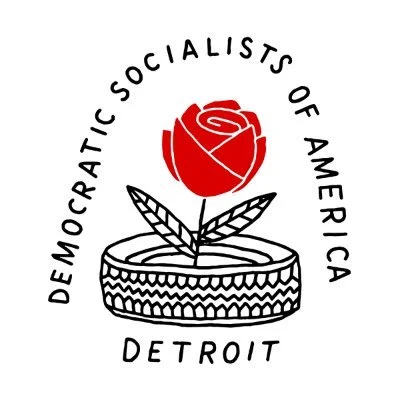

Organizing 101: Jump-Starting Action Through Education
By: Casey G.

[Editor’s Note: The final session of the Political Education Committee’s fall Organizing 101 series, “Always Be Organizing,” will be in Dearborn at 6:30 Thursday, November 20, followed by a social hour. You don’t need to have attended the first three sessions to attend the last! RSVP here.]
I’ve paid my $5 a month to DSA since about 2020, attending one General Meeting but always ending up finding one reason or another not to really get involved. After moving to Detroit this summer, I pulled up the Detroit DSA Events page and told myself it was time to stop sitting on the sidelines. I’d spent years agreeing with the principles, nodding along online, but I wanted to actually meet people and be part of the work.
Organizing 101 felt like a good first step — a way to connect what I believe with what I do.
At its heart, Organizing 101, based on the Labor Notes book Secrets of a Successful Organizer, is about connection. The series introduced the foundations of union organizing — how to move from appreciating the idea of a union to the practical, everyday skills we need to bring people together and build solidarity in our workplaces. Before Zoom calls and printing stickers, organizing begins with talking to your coworkers.
Session One, Beating Apathy, focused on moving from frustration to collaboration. How do you go from venting about work to building real momentum and solutions with your colleagues? We practiced early organizing conversations — asking good questions to uncover issues, and helping coworkers move from “this is just the way things are” to realizing they have permission to feel frustrated, to dream, and to hope for (and potentially help build) a better workplace.
The basics of being a good listener don’t change, but it’s always useful to have a refresher. The handout taught me our brains process thoughts four times faster than spoken speech, making it easy to fill in the gaps in someone’s story with our own assumptions. We practiced role-playing exercises to make sure we were slowing down enough to focus on what was really being said, and how to show you hear what someone’s saying.
Our leaders also walked us through the organizer’s bullseye — from the core group (the folks thinking about organizing even on their days off), to activists and then supporters, and how to identify the disengaged or those hostile to the campaign. It was helpful to visualize where different people might fall, and how to meet each of them where they are.
Session Two, Organizing Your Leadership Team, built on that foundation with a hands-on exercise. We were given quotes from conversations with five hotel employees and asked to identify which one might be a natural leader. There was a bit of logic and deduction involved — who did coworkers mention most often? Who already had everyone’s phone numbers? From there, we began to think about the logistics of our own workplaces: Who spends time together outside of work? How many departments and shifts are there?
Then we talked with those around us about examples in our own workplaces of times we might need to move fast and mobilize. Participants were open and vulnerable, sharing experiences from their workplaces and giving examples of grievances and goals.
In a small workplace, maybe you could reach everyone yourself — but it’s not exactly in the spirit of solidarity to carry that alone. True organizing means identifying and empowering others to lead alongside you, creating a network strong enough to mobilize everyone.
Session Three, Turning an Issue into a Campaign, featured Michigan State Representative Dylan Wegela, who shared lessons from his time organizing a statewide strike with teachers in Arizona. Moving from identifying issues, we then identified targets for the campaign (people who had the ability to change these things) and potential strategies. The strategy ideas were then put on a thermometer ranging from a relatively calm and cool idea like wearing red shirts on a Wednesday (the starting point for the Arizona campaign), to piping hot like a strike, or, in my favorite new phrase from the workshop, “Teacher January 6” (that one might have broken the thermometer).
My favorite part was an exercise where we were given five common workplace grievances he found with the teachers in Arizona, and participants brainstormed possible demands to address them. Afterward, we compared our ideas to the actual demands the teachers made in their campaign — out of the six demands the group had come up with, we’d accurately guessed half of them, most of which were solidified in the contract later.
Dylan’s reflections were honest and grounding — some campaigns succeed, and many don’t. It was inspiring to hear both his victories and his honesty. Not every campaign wins, but every one builds skills, connection, and courage — and that, too, is a victory.

Organizing 101: Jump-Starting Action Through Education was originally published in The Detroit Socialist on Medium, where people are continuing the conversation by highlighting and responding to this story.


Weekly Roundup: November 18, 2025
Events & Actions
Events with a  are especially new-member-friendly!
are especially new-member-friendly!
 Tuesday, November 18 (8:00 AM – 4:30 PM): ICE out of SF courts! (In person at 100 Montgomery St)
Tuesday, November 18 (8:00 AM – 4:30 PM): ICE out of SF courts! (In person at 100 Montgomery St)
 Tuesday, November 18 (12:00 PM – 2:00 PM): Keep Market Street Car Free Petition Delivery + Public Comment (In person at San Francisco City Hall, 1 Dr Carlton B Goodlett Pl)
Tuesday, November 18 (12:00 PM – 2:00 PM): Keep Market Street Car Free Petition Delivery + Public Comment (In person at San Francisco City Hall, 1 Dr Carlton B Goodlett Pl)
 Tuesday, November 18 (6:00 PM – 7:30 PM): Ecosocialist Bi-Weekly Meeting (Zoom and in person at 1916 McAllister St)
Tuesday, November 18 (6:00 PM – 7:30 PM): Ecosocialist Bi-Weekly Meeting (Zoom and in person at 1916 McAllister St)
 Wednesday, November 19 (6:00 PM – 7:30 PM):
Wednesday, November 19 (6:00 PM – 7:30 PM):  What Is DSA? (In person at Senator Milton Marks Branch Library, Richmond District, 351 9th Ave)
What Is DSA? (In person at Senator Milton Marks Branch Library, Richmond District, 351 9th Ave)
 Wednesday, November 19 (6:45 PM – 8:30 PM): Tenant Organizing Working Group Meeting (Zoom and in person at 438 Haight St)
Wednesday, November 19 (6:45 PM – 8:30 PM): Tenant Organizing Working Group Meeting (Zoom and in person at 438 Haight St)
 Wednesday, November 19 (7:30 PM – 9:00 PM):
Wednesday, November 19 (7:30 PM – 9:00 PM):  Richmond District Social (In person at Lost Marbles Brewery, 823 Clement St)
Richmond District Social (In person at Lost Marbles Brewery, 823 Clement St)
 Thursday, November 20 (5:30 PM – 6:30 PM):
Thursday, November 20 (5:30 PM – 6:30 PM):  Education Board Open Meeting (Zoom)
Education Board Open Meeting (Zoom)
 Thursday, November 20 (7:00 PM – 9:00 PM):
Thursday, November 20 (7:00 PM – 9:00 PM):  DSA from NY to SF: Our Time 2 Win! (In person at 2868 Mission St)
DSA from NY to SF: Our Time 2 Win! (In person at 2868 Mission St)
 Thursday, November 20 (7:00 PM – 8:00 PM):
Thursday, November 20 (7:00 PM – 8:00 PM):  Immigrant Justice Court Action Orientation (In person at 1916 McAllister St)
Immigrant Justice Court Action Orientation (In person at 1916 McAllister St)
 Friday, November 21 (8:00 AM – 4:30 PM): ICE out of SF courts! (In person at 100 Montgomery St)
Friday, November 21 (8:00 AM – 4:30 PM): ICE out of SF courts! (In person at 100 Montgomery St)
 Friday, November 21 (7:00 PM – 9:00 PM): Labor Movie Night: Finally Got the News (In person at 1916 McAllister St)
Friday, November 21 (7:00 PM – 9:00 PM): Labor Movie Night: Finally Got the News (In person at 1916 McAllister St)
 Saturday, November 22 (11:00 AM – 1:00 PM):
Saturday, November 22 (11:00 AM – 1:00 PM):  Physical Education + Self Defense Training (In person at William McKinley Monument, Panhandle)
Physical Education + Self Defense Training (In person at William McKinley Monument, Panhandle)
 Saturday, November 22 (11:00 AM – 2:00 PM): RV Outreach Event with the Coalition on Homelessness (Garfield Square Park & Recreation Center, 3100 26th St)
Saturday, November 22 (11:00 AM – 2:00 PM): RV Outreach Event with the Coalition on Homelessness (Garfield Square Park & Recreation Center, 3100 26th St)
 Saturday, November 22 (1:00 PM – 2:30 PM): What It Takes to Win: Power Mapping Session (In person at 1916 McAllister St)
Saturday, November 22 (1:00 PM – 2:30 PM): What It Takes to Win: Power Mapping Session (In person at 1916 McAllister St)
 Sunday, November 23 (11:00 AM – 12:00 PM):
Sunday, November 23 (11:00 AM – 12:00 PM):  Public Bank Lit Drop (Meet at McCoppin Square Park, 1200 Taraval St)
Public Bank Lit Drop (Meet at McCoppin Square Park, 1200 Taraval St)
 Sunday, November 23 (11:00 AM – 1:00 PM):
Sunday, November 23 (11:00 AM – 1:00 PM):  No Appetite for Apartheid Consumer Pledge Canvass (Meet at Clement & Arguello St)
No Appetite for Apartheid Consumer Pledge Canvass (Meet at Clement & Arguello St)
 Sunday, November 23 (1:00 PM – 3:00 PM):
Sunday, November 23 (1:00 PM – 3:00 PM):  SF Emergency Workplace Organizing Committee Flyering (Meet at Nopa, 560 Divisadero St)
SF Emergency Workplace Organizing Committee Flyering (Meet at Nopa, 560 Divisadero St)
 Sunday, November 23 (1:00 PM – 2:30 PM):
Sunday, November 23 (1:00 PM – 2:30 PM):  What Is DSA? (In person at 1916 McAllister St)
What Is DSA? (In person at 1916 McAllister St)
 Sunday, November 23 (5:00 PM – 7:00 PM): Capital Reading Group (Zoom and in person at 1916 McAllister St)
Sunday, November 23 (5:00 PM – 7:00 PM): Capital Reading Group (Zoom and in person at 1916 McAllister St)
 Monday, November 24 (6:00 PM – 8:00 PM):
Monday, November 24 (6:00 PM – 8:00 PM):  Tenderloin Healing Circle (In person at Kelly Cullen Community, 220 Golden Gate Ave)
Tenderloin Healing Circle (In person at Kelly Cullen Community, 220 Golden Gate Ave)
 Monday, November 24 (6:30 PM – 8:00 PM): Homelessness Working Group Regular Meeting (Zoom and in person at 1916 McAllister St)
Monday, November 24 (6:30 PM – 8:00 PM): Homelessness Working Group Regular Meeting (Zoom and in person at 1916 McAllister St)
 Sunday, November 30 (11:00 AM – 2:00 PM):
Sunday, November 30 (11:00 AM – 2:00 PM):  Growing Community: DSA Goes to Hummingbird Farm (In person at Hummingbird Farm, 1645 Geneva Ave)
Growing Community: DSA Goes to Hummingbird Farm (In person at Hummingbird Farm, 1645 Geneva Ave)
 Monday, December 1 (7:00 PM – 8:00 PM): Labor Board x SF Emergency Workplace Organizing Committee Local Meeting (Zoom and in person 1916 McAllister St)
Monday, December 1 (7:00 PM – 8:00 PM): Labor Board x SF Emergency Workplace Organizing Committee Local Meeting (Zoom and in person 1916 McAllister St)
Check out https://dsasf.org/events for more events and updates.
ICE Out of SF Courts!
Join neighbors, activists, grassroots organizations in resisting ICE abductions happening at immigration court hearings! ICE is taking anyone indiscriminately in order to meet their daily quotas. Many of those taken include people with no removal proceedings.
We’ll be meeting every Tuesday and Friday from 8:00 AM to 4:30 PM at Immigration Court at 100 Montgomery. We need all hands on deck. The 8:00 AM to 10:00 AM window is when we most need to boost turnout, but if you can’t make that please come whenever works for you. 1 or 2 hours or the entire time! We’re also holding orientation sessions for folks, but that is not required to attend. See the  Immigrant Justice Court Action Orientation event for more details.
Immigrant Justice Court Action Orientation event for more details.
Keep Market Street Moving
Today, November 18! DSA SF is joining the Keep Market Street Moving campaign for two actions at City Hall where we’re supporting the Citizens Advisory Committee’s call to close the loophole that allows Waymo and other TNCs on car-free Market Street between Steuart and 10th. Join us for a rally and petition delivery at 12:00 PM and public comment shortly around 1:00 PM. RSVP here.

 Ask: RDU Picnic!
Ask: RDU Picnic!
Show some solidarity for the members of Rideshare Drivers United, come to our picnic today, November 18th from 12:00-3:00 PM at Bayside Park (1125 Airport Rd, Burlingame)!

 DSA From NY to SF: Our Time to Win
DSA From NY to SF: Our Time to Win
New York City didn’t elect Zohran Mamdani overnight. NYC DSA spent years building coalitions, training members, and forging a socialist path in NY’s halls of power.
But DSA SF is no stranger to this work. Join us on Thursday, Nov 20 for DSA From NY to SF: Our Time to Win. You’ll get a crash course on how electoral politics work in SF and how socialists can tap in. We’ll be joined by two DSA members: D9 Supervisor Jackie Fielder and former D5 Supervisor Dean Preston!
Let’s keep building the movement that can win our own Zohran-scale victories. Mission Cultural Center for the Latino Arts (2868 Mission St)
Mission Cultural Center for the Latino Arts (2868 Mission St) Thursday, November 20, 7:00 – 9:00 PM
Thursday, November 20, 7:00 – 9:00 PM RSVP
RSVP

Labor Movie Night: Finally Got the News
 HAVE YOU HEARD THE NEWS?
HAVE YOU HEARD THE NEWS?  On Friday, November 21 at 7:00 PM at 1916 McAllister St, DSA SF’s Labor Board is showing FINALLY GOT THE NEWS, a documentary on the League of Revolutionary Black Workers working in the auto factories of Detroit. Through interviews with the members of the movement and footage shot in the auto plants, the film documents their efforts to build an independent black labor organization that, unlike the UAW, will respond to worker’s problems, such as the assembly line speed-up and inadequate wages faced by both black and white workers in the industry. Join us for a screening and discussion about how we can learn from the revolutionary workers who came before us!
On Friday, November 21 at 7:00 PM at 1916 McAllister St, DSA SF’s Labor Board is showing FINALLY GOT THE NEWS, a documentary on the League of Revolutionary Black Workers working in the auto factories of Detroit. Through interviews with the members of the movement and footage shot in the auto plants, the film documents their efforts to build an independent black labor organization that, unlike the UAW, will respond to worker’s problems, such as the assembly line speed-up and inadequate wages faced by both black and white workers in the industry. Join us for a screening and discussion about how we can learn from the revolutionary workers who came before us!
RSVP here!

Apartheid-Free Bay Area Consumer Pledge Canvassing
Our next consumer pledge canvass will be on Sunday, November 23 from 11:00 AM to 1:00 PM at the Clement Street Farmers Market! We’ll meet at Clement and Arguello (by Breck’s). Let’s have a strong close for 2025 and build support for an apartheid-free SF!
RSVP here.
SF Public Bank Coalition Lit Drop
Please join DSA SF’s Ecosocialist Working Group and the SF Public Bank Coalition in a lit drop event this Sunday, November 23 at 11:00 AM in McCoppin Square Park. We’re spreading the word about the opportunity for an upcoming public bank in San Francisco, which would be the first for any city in the US. Training, coffee, and snacks will be provided! RSVP here.

DSA SF Goes to Hummingbird Farm
Come touch grass with Socialists on Sunday, November 30 from 11:00 AM to 2:00 PM at Hummingbird Farm in SF!
We will be working with the farm’s staff to learn about their approach to eco justice, urban agriculture, and community organizing. This will be a great opportunity for newcomers and veterans alike to come meet their comrades, get a little exercise, and connect themselves with the land.
Come prepared to get your hands dirty! RSVP here. More info on Hummingbird Farm is available on their website.
 Join DSA SF in Demanding Equitable Transit Funding
Join DSA SF in Demanding Equitable Transit Funding
In response to Mayor Lurie’s office considering a parcel tax to address the Muni funding crisis, we joined Muni Now, Muni Forever, a coalition of community advocates and organizations, in demanding that the measure:
- Generate enough revenue to expand Muni service by 10%
- Be structured fairly, with a variable rate so smaller properties pay less and larger properties pay more
- Protect tenants from additional costs
- Scale with inflation and rising costs to prevent a similar crisis in a few years
Read the full letter here.
Make your voice heard by joining us in these demands: muniforever.org/speak-up
Behind the Scenes
The Chapter Coordination Committee (CCC) regularly rotates duties among chapter members. This allows us to train new members in key duties that help keep the chapter running like organizing chapter meetings, keeping records updated, office cleanup, updating the DSA SF website and publishing the weekly newsletter. Members can view current CCC rotations.
Interested in helping with the newsletter or other day-to-day tasks that keep the chapter running? Fill out the CCC help form.

Merrie England (1894)
Robert Blatchford (1851 – 1943) was an English socialist and editor of The Clarion, which sprang up a number of socialist cultural organizations including the National Clarion Cycling Club, hiking clubs, and theater groups.
In Merrie England, first published in The Clarion, Blatchford writes to the “practical working man,” John Smith of Oldham, making the case for socialism. The book is written in an accessible and humorous style. It was said that “for every convert made by ‘Das Kapital,’ there were a hundred made by ‘Merrie England.’”
While several passages are dated and Blatchford’s solutions are sometimes eccentric, Merrie England demonstrates how to argue socialist principles. The follow-ing excerpt, from the chapter ‘Minor Questions,’ responds to common questions posed by critics of socialism. – GLH
1. Under Socialism: What will you do with your loafers?
Before I answer this question allow me to offer a few hints to young Socialists. The opponents of Socialism appear to suppose that if they can suggest any difficulty, however trivial, which may arise in the working of our system, they have disposed of the whole matter. Very many ardent but inexperienced young Socialists fall into the error of trying to prove that Socialism and Heaven are the same thing.
Both sides should remember that Socialism is not offered as a perfect system of life, but only as very great improvement upon the system under which we now live.
The question, then, is not whether Socialism is the best thing man can conceive, but whether Socialism is better than our present method of life.
Therefore, when a critic asks a young Socialist whether a certain evil will exist under Socialism, let the Socialist immediately ask his critic whether the same evil exists now.
So in the case of the loafer. Many over-confident, but not very profound, critics, demand triumphantly, “What will you do with your loafers?”
To them I say, “What do you do with your loafers?”
The word loafer, I take it, means one who loafs or sponges upon the earnings of other people.
A loafer, then, may be an idle tramp without a shirt to his back, or he may be an idle peer with a rent-roll of half a million a year.
It is stated in one of the Fabian tracts — “Facts for Socialists” — that there are something like a million of adult males in receipt of large incomes who never do any kind of work at all.
Under Socialism these men might continue idle; but they would certainly not continue rich, nor would they continue to be known as “gentlemen.”
But besides the millions of well-paid and well-fed loafers who are at present supported upon the earnings of the poor, there are now in this country immense numbers of paupers, beggars, tramps, and criminals, as well as a large army of unemployed workers.
Now before I tell you what would be done with all these people under Socialism, I must tell you what is done with them now.
Do you suppose that society does not support these loafers? But they live; and what do they live on?
All wealth is won by labour, is it not? Then all the tramps, thieves, paupers, and beggars live upon poor-rates, plunder, alms, or prison allowances, and all these means of support are earned by the labour of the working poor.
But under your present system you not only feed and house these loafers, but you go to the expense of masters, matrons, doctors, warders, and police, all of whom have to be fed and paid to wait upon or attend to the loafers.
Next, with regard to the unemployed. These people exist; and they exist in enforced idleness, and at the expense of those who work.
Note one or two facts. These people do nothing for their own support, and many of them, through want and shame, and forced idleness, become criminals or tramps.
This is not only a waste of wealth, and a waste of power, it is also a most wicked and disgraceful waste of human souls.
Now, let us see how things would work out under Socialism. We will divide our loafers into two classes. Those who could work and will not, and those who would work and cannot.
So long as it is possible for a willing worker to be forced into idleness, so long will there exist a reason for the giving of alms.
Why do we relieve a tramp on the road, or a beggar in the street? It is because we are never sure that the man is a loafer; because we always fear that his penury may be due to misfortune, and not to idleness. But under Socialism this doubt would disappear. Under Socialism there would be work for all. Therefore, under Socialism every man who was able to work would be able to live. This fact being universally known, no able-bodied man could exist without work. A beggar or a tramp would be inevitably a loafer, and not a hand would be held out to help him.
The answer to the able-bodied beggar would be “If you are hungry go and work.” If the man refused to work he must starve.
The answer, then, to the question of what Socialists would do with the loafers is, that under Socialism we should oblige the loafer to work or perish; whereas, under present conditions, we either make him into a “gentleman” or a pauper, or a beggar, or a thief; in any one of which capacities he is allowed to live in idleness upon the labour of other men.
Tell me, is it not true of Merrie England to-day that the idlest are the richest, and the most industrious the poorest amongst the people? Well, I want you to remind your critics of these things when they ask you what Socialists will do with their loafers.
Let us take another question.
The post Merrie England (1894) first appeared on Rochester Red Star.
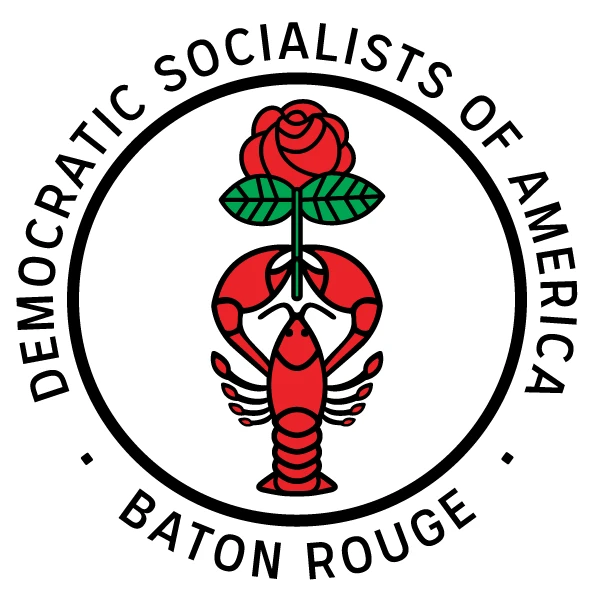

Compassion and Fairness for Immigrants
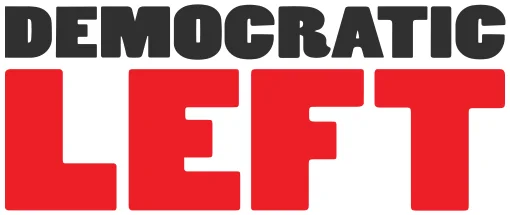

Fall 2025 Chapter Reports: Electoral Campaigns and More
More chapter reports from the fall of 2025, this time focusing on electoral campaigns and more!
The post Fall 2025 Chapter Reports: Electoral Campaigns and More appeared first on Democratic Left.
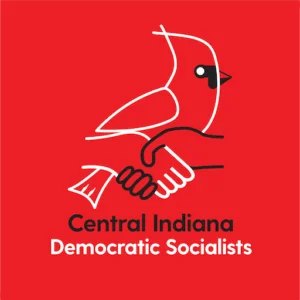

Central IN DSA distances itself from George Hornedo, condemns Zionism


Detroit DSA Turns Out for Starbucks Strikers — And So Do Customers
Detroit DSA Turns Out for Starbucks Strikers — And So Do Customers
By: Kristin Daniel

[Editors’ note: Kristin was part of Detroit DSA’s solidarity action Saturday, November 15, along with dozens of other DSA chapters across the country, to support Starbucks strikers. We leafleted five nonunion stores in metro Detroit to inform both baristas and customers about the workers’ strike for a union contract with decent pay and working conditions. Stay tuned to the Labor Working Group to find out about future actions next weekend.]
Standing on Woodward Avenue, trying to hold a poster that read “Solidarity with Starbucks Workers” in just the right way so the wind wouldn’t take it out of my hand, I smiled and waved along with my comrade, KC, as the first car turned in. As the car started to get into the line for the drive-through, the driver stopped and rolled her window down and asked what was going on.
“There’s a strike happening!” I answered, as KC stepped forward, handing the woman a small flier. We explained that Starbucks stores across the country were striking for a better contract, and that we were asking people to consider getting their coffee elsewhere for the duration of the strike.
“Hell yeah. I can absolutely go somewhere else today,” the woman responded, looking up from the flier. She exited the drive-through line, drove around the building, and honked and cheered as she turned back into the main road.
Although not every interaction for the rest of the day was as positive as the first, the community responded resoundingly positively. Some people in the drive-through line refused to roll their windows down, and others walking into the store took longer paths around the parking lot to avoid walking by us, but a truly surprising number of people were interested in hearing about the union.
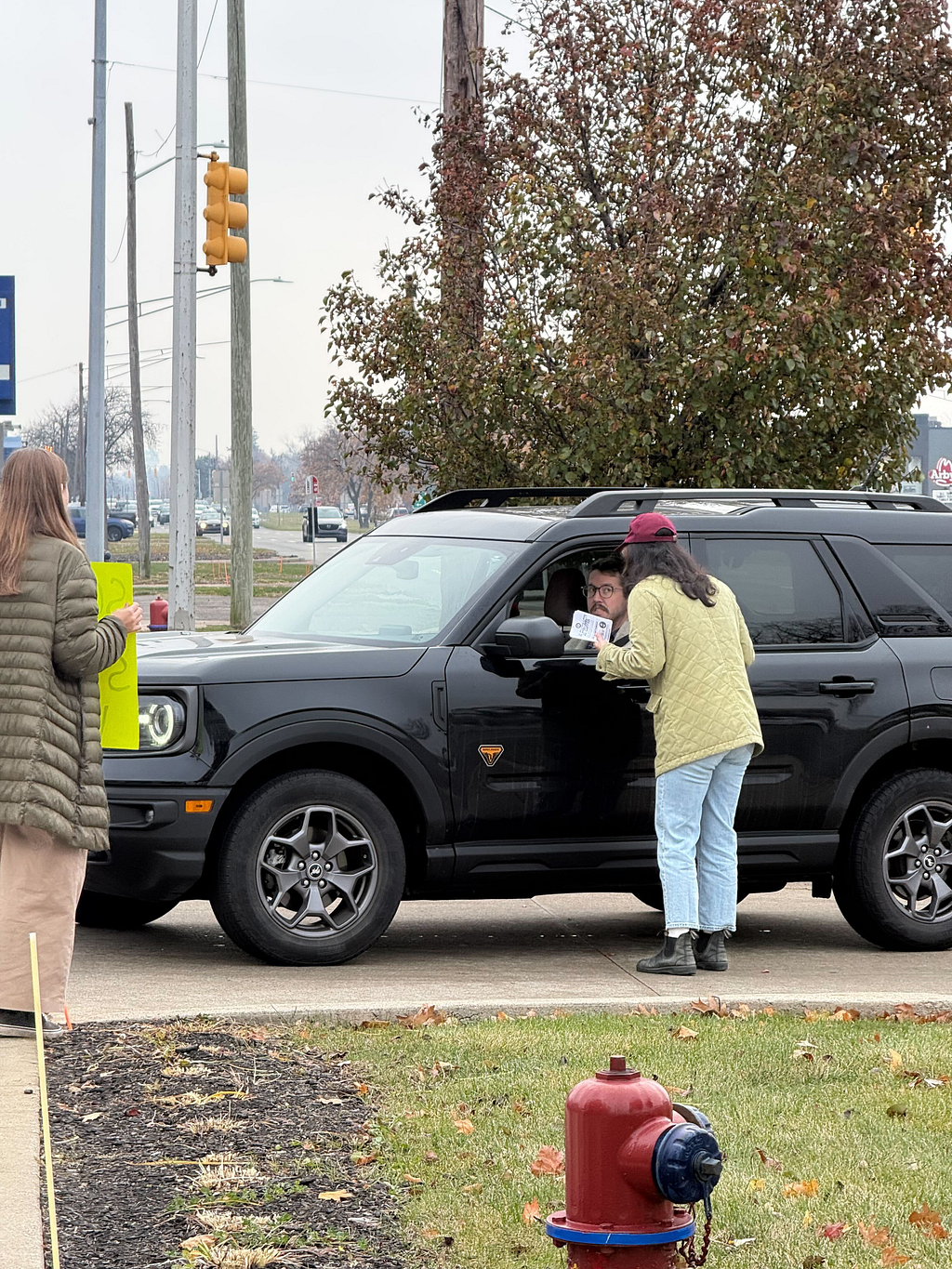
Although many of the people that we spoke to had already paid for a mobile order and did not want to go through the process of cancelling, they enthusiastically said that they would not come back until after the strike was over. Those that had yet to put in an order were excited to chat through options for local coffee shops nearby after hearing about the strike.
In general, people seemed curious and willing to engage. Many had not heard about the strike and wanted to hear about the demands of the workers. One woman we spoke to told us that she was part of a union, and that her union had just won a new contract, so she was happy to help others do the same.
Cars driving by honked and waved when they saw us standing outside the shop. Over a dozen people decided to go somewhere else for the day, and even more pledged not to come back. We ran out of fliers in about an hour, and I headed home feeling more connected to my community, hopeful about the future, and confident that Starbucks workers would get the contract that they deserved.

In the past few years, labor unions have reached a level of popular support that they hadn’t seen since the 1960s, but many people still have a stereotypical view of labor unions as being only possible for certain types of jobs. As fewer Americans are employed in things like manufacturing, the image of what a union job can be also needs to change. The current strike action by Starbucks Workers United (SBWU) is not only an opportunity for workers to fight for their own dignity and a fair contract, but also a great opportunity to demonstrate to a receptive public that workers in different sectors can successfully organize and improve their material conditions.
If my experience is any indication, many people that are headed to Starbucks are people that would have little opportunity to engage with the labor movement otherwise. Many people simply didn’t know that Starbucks workers had a union, much less that Starbucks Workers United was on strike. By standing in solidarity with SBWU during this strike, socialists can engage more working class Americans who are already sympathetic and help convert popular support to tangible wins.
As someone who is newer to the chapter, getting involved was very easy. Simply join the Labor Working Group Slack to get updates from the DSA Starbucks solidarity committee and find an action that you are able to attend. As noted, the community has been largely receptive, so don’t be scared to come out and speak with your neighbors about how they can help!
To support Starbucks workers, commit to boycotting Starbucks for the duration of the strike by signing their No Contract, No Coffee pledge, or donate to the strike fund.


Detroit DSA Turns Out for Starbucks Strikers — And So Do Customers was originally published in The Detroit Socialist on Medium, where people are continuing the conversation by highlighting and responding to this story.
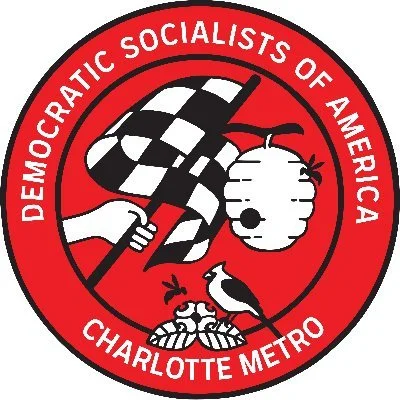

¡ICE y CPB, Fuera de Charlotte NC! / ICE and CPB, Get Out of Charlotte NC!
Español
Este fin de semana, la Oficina de Aduanas y Protección Fronteriza, fuerza policiaca personal de Trump, empezará a ocupar nuestra ciudad y secuestrar a nuestros vecinos para terrorizar a la comunidad inmigrante e intimidarnos a quienes nos oponemos. Charlotte Metro DSA condena esta invasión. Nos mantenemos en solidaridad con la clase trabajadora de todas las naciones . Lucharemos contra esta invasión con toda la gente de consciencia.
Estos ataques son parte de una historia larga del estado fomentando la división entre personas de la clase trabajadora para debilitar y amenazar a nuestras comunidades con agentes armados cuando parecemos demasiado fuertes.
Previamente en este año, iniciamos nuestra campaña para boicotear a Avelo. La aerolínea Avelo es una aerolínea de bajo costo que está bajo contrato con ICE para llevar a cabo vuelos de deportaciones. Estamos pidiendo a la gente que participe en el boicot para generar presión a la empresa y la Ciudad de Concord, ciudad de donde despegan los vuelos, para que cesen el contrato. Con este fin llevaremos a cabo una protesta el día 29 alrededor del aeropuerto Concord-Padgett, les invitamos a que se nos unan.
Otros grupos de la comunidad están trabajando activamente para luchar contra este fenómeno.
Por favor revisen y utilicen la red de migrantes de las Carolinas y su línea directa para reportar secuestros (704) 740-7737
Y también visiten Siembra NC para obtener detalles sobre el entrenamiento en vigilancia de ICE el 17 de noviembre.
Nuestro objetivo es organizar y unir a la ciudad para resistir estos secuestros. Por favor acérquese a nosotros para colaborar o involucrarse.
En Solidaridad,
El Comité Directivo de Charlotte Metro DSA
English
Today, Customs & Border Patrol, Trump’s personal police force, will begin occupying our city and abducting our neighbors to terrorize the immigrant community and cow domestic opposition. Charlotte Metro DSA condemns this invasion. We stand in solidarity with the working class of all nations. We will fight this invasion with all people of conscience.
These attacks are a part of the long history of capital & its state fomenting divisions among the working class to keep us weak and siccing armed agents on us and our communities when we appear too strong.
Earlier this year we began our Boycott Avelo campaign. Avelo airlines is a budget airline that has a contract with ICE for deportation flights. We are asking people to boycott the company and help us put pressure on the company and the City of Concord where they fly out of to get them to drop the contract. To that end, we’ll be having a protest on the 29th by the Concord-Padgett airport. We invite you to join us.
Other groups in the community have also been actively fighting back. Please check out the Carolina Migrant Network and use their hotline to report abductions: (704) 740-7737.
See Siembra NC for details about their upcoming ICE Watch trainings.
We aim to organize and unite the city to resist these abductions. Please reach out to collaborate or get involved.
In Solidarity,
The Charlotte Metro DSA Steering Committee

We Cannot Stay Silent.
by Gregory Lebens-Higgins
The following remarks were made at the No Reawaken America Tour (“RAT”) Teach-In, held August 13, 2022 at Austin Park in Batavia, NY. The RAT was a christian nationalist propaganda tour featuring Michael Flynn, Eric Trump, and other reactionaries and conspiracists. After public pressure from groups like ROC DSA, the event moved from Rochester to the Cornerstone Church in Batavia, where it was met by the continued resistance of the newly-formed Genesee County DSA and allies.
These were my first public remarks as a socialist (a “coming out,” if you will)—acting upon my beliefs as part of an organized mass working-class movement. It was an empowering experience, and one that we try to recreate for others in the pages of Rochester Red Star. Although much has changed over the intervening three years, the themes expressed here continue to ring true. A recording of these remarks is available here: bit.ly/norat-wny.
My name is Greg. I’m here as an organizer with the Genesee County DSA. Thank you for being here this afternoon. For showing that Western New York stands together in opposing the entrenchment of fascist ideology. We cannot stay silent.
This teach-in is not just about the Reawaken America Tour taking place today. It is about solidifying a movement of the people, all people. Not just white, heterosexual, so-called “Christian patriots.”
We, as socialists, believe that if people’s needs are met, if they are provided the conditions to live a dignified life, if they do not feel alienated, and voiceless, that fascism will not gain ground.
I joined DSA in the spring of 2020. At that time COVID was beginning to run rampant through society. Our government’s response was weak and late. Our healthcare system—shaped by years of profit-motivated care—was unprepared for the crisis. People were faced with the choice between not paying their bills or putting their lives at risk. Essential workers were forced onto the front lines but remained at the bottom of the class structure. And those with small businesses, forced to shutter their doors, confronted the possibility of being pressed into precarity.
We must recognize that people have legitimate concerns regarding their material conditions. There is a link between our failing healthcare system and COVID denialism. We must also acknowledge people’s feelings of isolation.
We live in a society that doesn’t seem to value life. That witnessed over a million deaths from COVID while our leaders called for a return to business as usual. Where two million people exist as exiles behind the bars of our jails and prisons. Where twelve million children live in food insecure households. And where regular shooting deaths have been metabolized.
These problems are overwhelming. It is easy to drift into nihilism and indifference. To construct elaborate fantasies about the “demonic forces” tearing apart the fabric of our society. Those speaking at the Reawaken America Tour hope to play on these fears. To exploit the hopelessness that people are feeling.
But what the Reawaken America Tour offers as a solution is the scapegoating of minorities, and an increasingly authoritarian society. These beliefs can only result in a dangerous logic of elimination.
As socialists, we offer an alternative vision, with the needs of all people at its center. I know you are all here today because you care. Because you believe that if we work together, we can change the circumstances that have led to those outcomes that I have just described.
Genesee County DSA is a relatively new organization. We first met at the beginning of April. But that meeting, with higher attendance than any of us could have anticipated, showed each of us that we are not alone in confronting these issues.
Since the Reawaken America Tour settled its sights on Batavia, we have discovered even more allies. The amplification of our opposition to fascism, our protests against this event over the preceding weeks, and today’s teach-in, all happened because we could count on one another.
THIS is what democracy looks like. With our collective voice, we shall overcome. We must do more than vote every two years. We must continue to find our strength in one another, and build networks to create real change. Change that will deny the hateful ideology of fascism room to fester.
SOLIDARITY FOREVER!
The post We Cannot Stay Silent. first appeared on Rochester Red Star.
 Ask: RDU Picnic!
Ask: RDU Picnic! DSA From NY to SF: Our Time to Win
DSA From NY to SF: Our Time to Win Join DSA SF in Demanding Equitable Transit Funding
Join DSA SF in Demanding Equitable Transit Funding